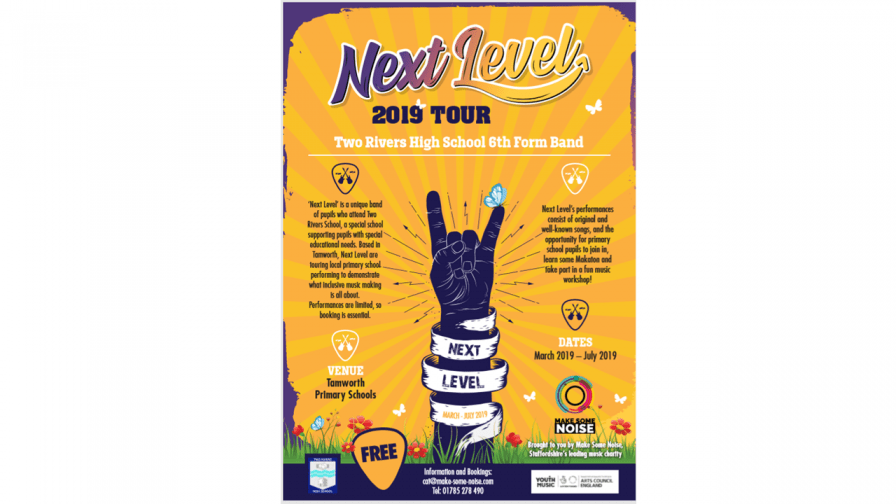Two Rivers - Next Level - Supporting the CPD of teachers in SEND music making.

I work with a 6th form group of young people in a special school. Most of those that are in the band have never played instruments or sang before so the first challenge is to get the young people up to a performance standard. I was the lead musician on the project but it was very much a team effort that involved my Make Some Noise colleague, Scott Belle and the teaching and teaching assistants at the school. Our band is made up of traditional rock and pop band instruments so the big challenge is to get a solid rhythm section of bass and drums and then to add piano, keyboard, guitars and vocals. The key thing for me and what is always at the forefront of my mind is to make each instrument part achievable and so in most cases this means to greatly simplify the part and strip it back to it's core. For example, a beautifully played drum part from a Bruno Mars song will sound great but at it's core it's a 4/4 rhythm that is held together by the kick drum, snare and hi-hat. I have frequently seen music leaders and teachers not simplify in this way and at a first or early access to music this can be very disheartening to a young person as well as the leader or teacher. The similar approach can be applied to the guitar. I use retuned guitars to an open chord or in to drop D tuning. In collaboration with the resident music teacher we evolved a system that uses stickers on each fret or note. For example, a yellow dot will indicate a note or chord of C. This is consistent across instruments. In the case of a C major chord on the keyboard/piano then the yellow sticker will be used on the C,E & G. The approach of simplifying material is also expanded to the choice of material when playing rock and pop covers. A simple three or 4 chord song played well will be much more impressive and exciting for young musicians that a more complex song that never sounds quite right. I know that this sounds so obvious but it's a mistake that I've seen made more often than you would expect.
For teachers in host schools (mainly primary schools) this was a new way of working to observe. Some schools take part in the wider opportunities programme but this format is quite different in that there is a wide range of instruments being played in the whole class ensemble. We also try to use very contemporary songs for some of the set – at least two songs were in the charts at the time of our performances. This hugely engaged our audiences and gave ideas of songs that other young people could sing.
Each performance also featured some musical games that involved musical elements such as dynamics or rhythm so the hope is that some of these may be used back in classrooms.
Finally, our performance opened up discussions back in class of the host schools about the resilience of the young people in our band, their hard work, bravery and positive attitude that they showed through the performance. All incredibly important attributes that had been on display during our show.
